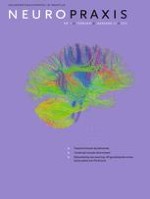01-04-2004 | Artikelen
Kwantitatieve elektro-encefalografie als hulpmiddel bij de vroege diagnostiek van Alzheimer-type dementie
Gepubliceerd in: Neuropraxis | Uitgave 2/2004
Log in om toegang te krijgenAbstract
Het aantal mensen met Alzheimer-type dementie in Nederland wordt momenteel geschat op meer dan 175.000. De verwachting is dat dit aantal zal verdubbelen in minder dan 50 jaar. Het is van belang dat Alzheimer-type dementie zo vroeg mogelijk wordt vastgesteld, of mogelijk zelfs voorspeld in een voorstadium van de ziekte. Op deze manier kan zo vroeg mogelijk begonnen worden met behandeling en kunnen patiënt en verzorgers worden ingelicht over de aard en het beloop van de klachten. In dit artikel wordt de mogelijke rol van elektro-encefalografie (eeg) in de vroege diagnostiek van Alzheimer-type dementie besproken. Met behulp van het eeg kunnen vroege veranderingen in het functioneren van de hersenen in kaart worden gebracht. Bovendien is het eeg makkelijk uit te voeren, weinig belastend voor de patiënt, en goedkoop.
